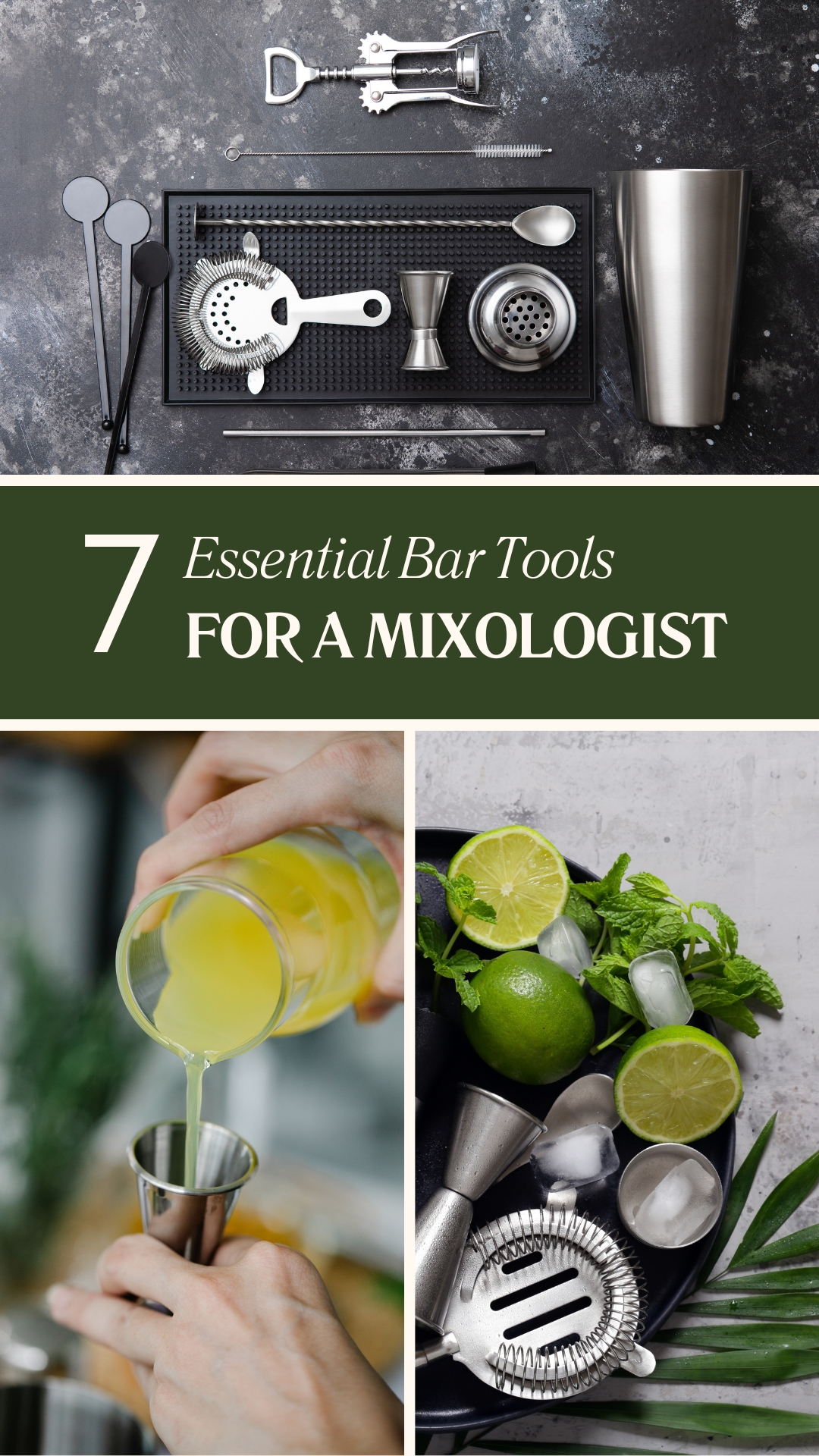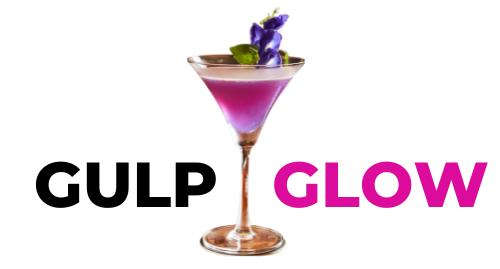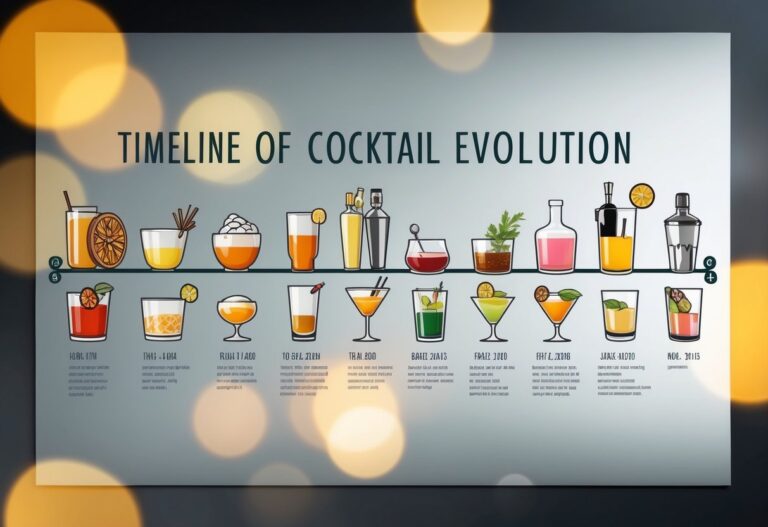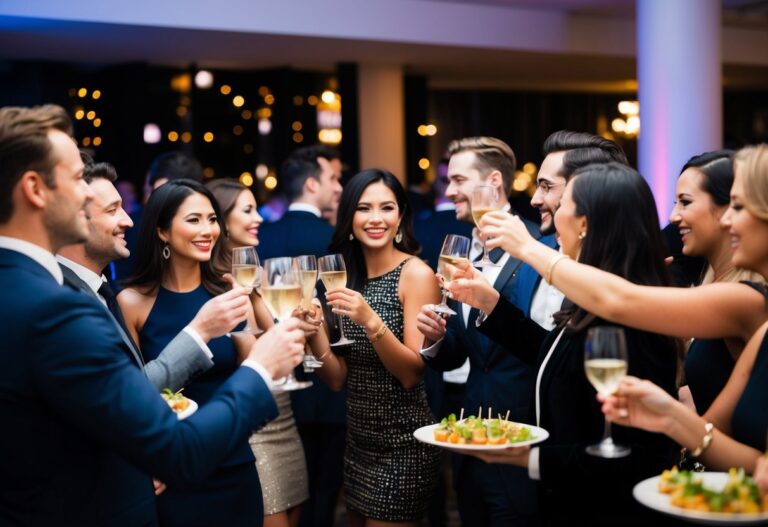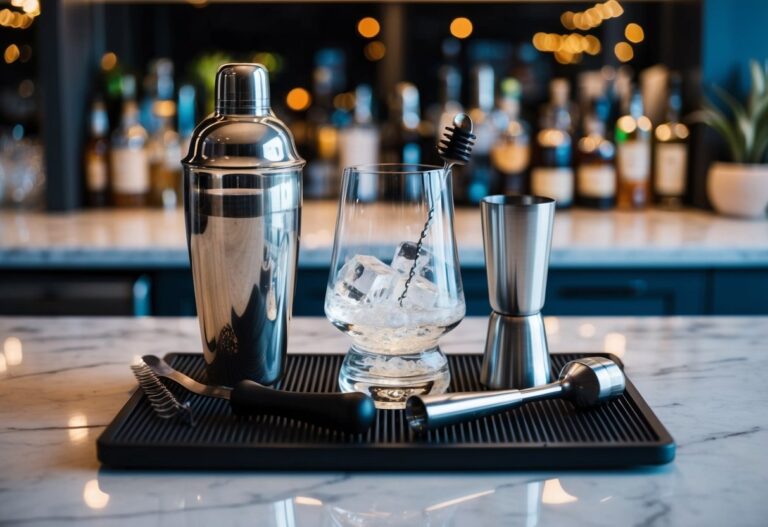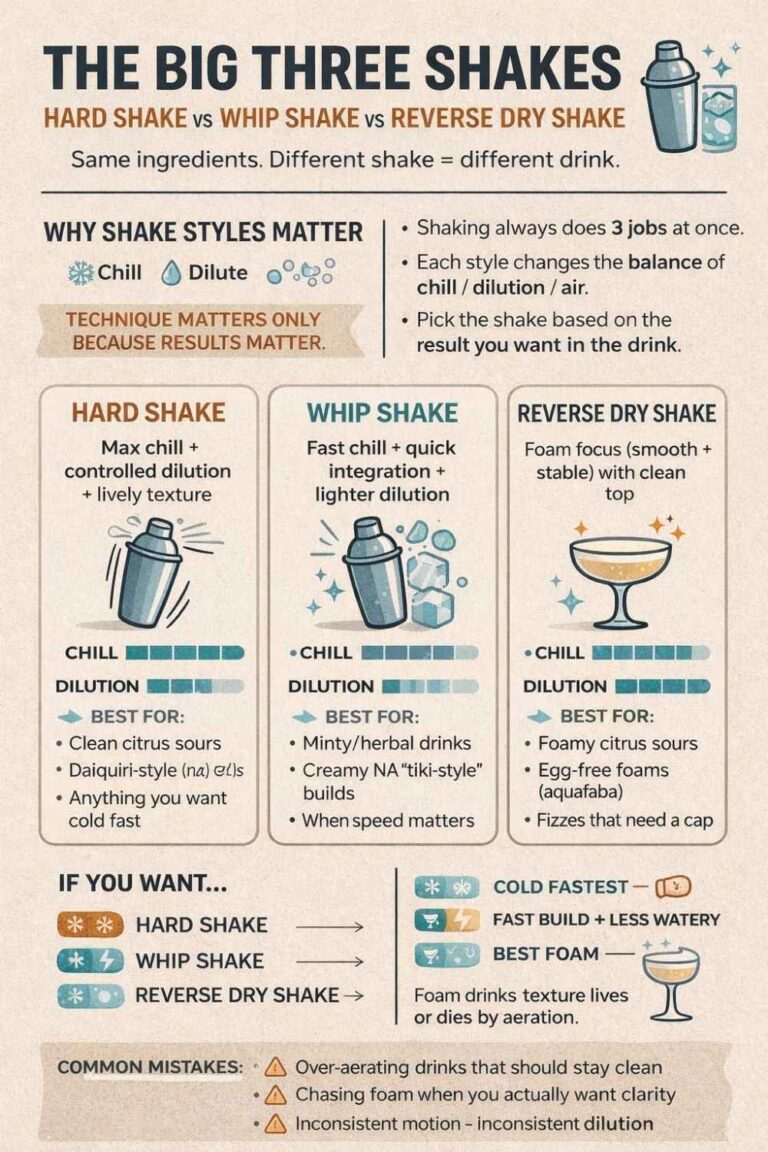The Essential Tools of a Mixologist: Your Ultimate Home Bar Setup Guide
Ready to transform your evenings with some homemade cocktails? Setting up your own home bar can be an exciting journey, packed with fun and creativity. To get started, you’ll need the right tools that every mixologist swears by. Imagine whipping up a perfect martini or a zesty margarita right in your kitchen!
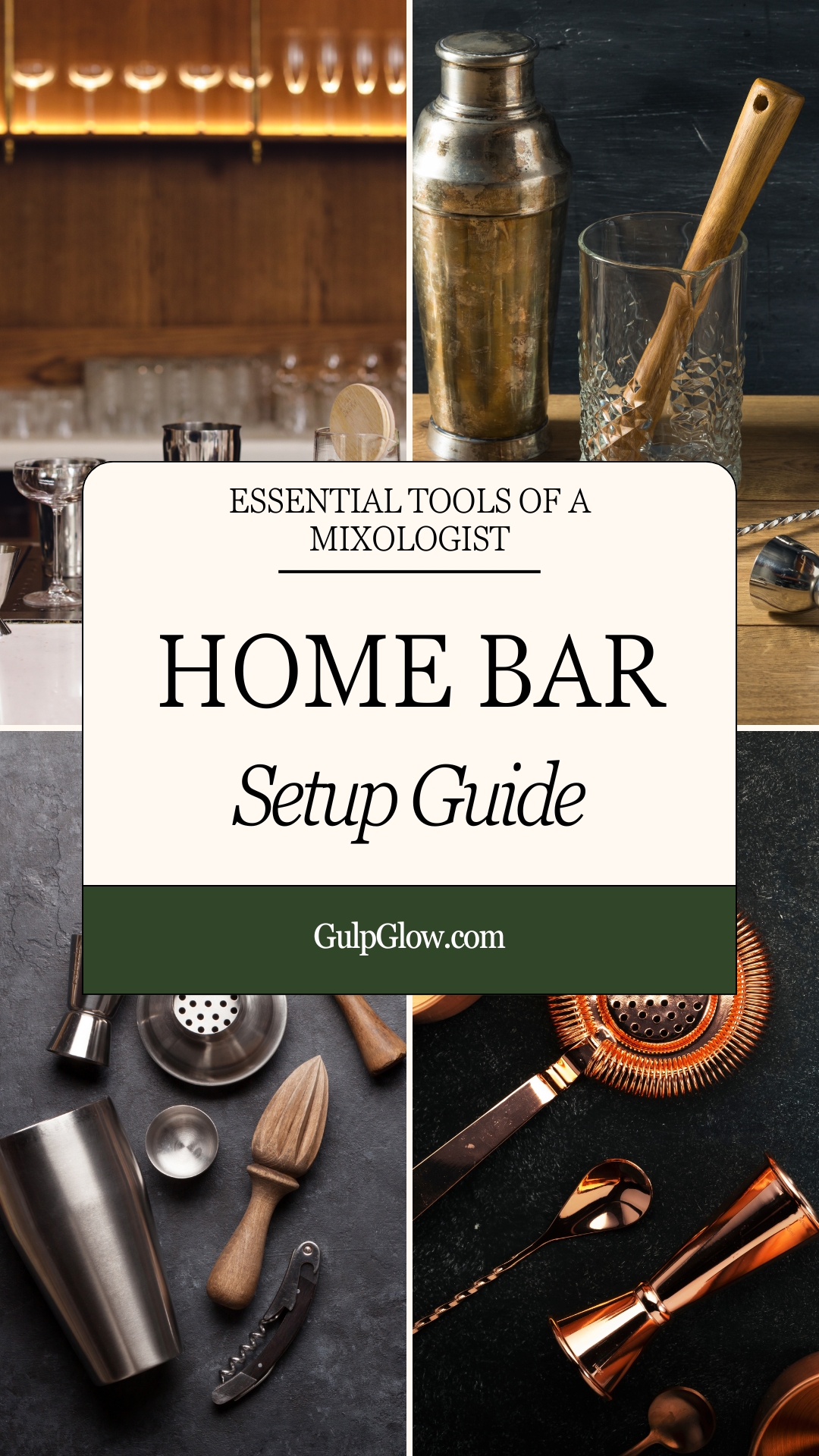
First on your list should be a quintessential shaker. This tool is crucial because it’s the backbone of all your mixing adventures. Next, you’ll want a jigger. This handy tool helps measure ingredients accurately, making sure your drinks taste just right. Don’t forget a strainer; it ensures a smooth pour every time.
A well-stocked home bar also needs essential spirits and mixers. Start with your favorite spirits and build from there. You’ll need the basics like vermouth, Cointreau, and Campari to add variety to your cocktail menu. By investing in these must-have tools and ingredients, you’ll be ready to dive into the creative and social world of cocktail culture. Enjoy the journey—cheers!
The Foundation: Essential Bar Tools
Starting your home bar journey involves knowing the right tools. Let’s dive into the key items every mixologist needs to create superb cocktails from home.
1. Understanding the Jigger
A jigger is a small but crucial measuring tool for bartenders. It ensures you get the perfect ratio of ingredients in your drinks. Usually, it comes with two sides: one for a standard shot (1.5 ounces) and a smaller side (0.75 ounces). Using a jigger helps maintain the balance of flavors in cocktails.
There are different types of jiggers, including the Japanese-style jigger, known for its sleek, precise design. Choose one that fits comfortably in your hand and has clear measurement markings.
2. Choosing the Right Shaker
A shaker is essential for mixing drinks. Cobbler shakers and Boston shakers are the two main types. The cobbler shaker includes a built-in strainer and is great for beginners. In contrast, the Boston shaker consists of two parts, usually a metal tin and a mixing glass, making it versatile and quick.
Boston shakers require a separate strainer and are preferred by professional bartenders for their size and efficiency. Whether you choose a cobbler or a Boston shaker, make sure it’s durable and provides a good seal to avoid spills.
3. The Significance of Strainers
Strainers are used to remove ice and other solids from your mixed drinks. The most common types are the Hawthorne strainer and the fine mesh strainer. The Hawthorne strainer has a metal spring and fits over the top of a shaker or mixing glass.
The fine mesh strainer is excellent for catching smaller bits. Together, they ensure a smooth cocktail without unwanted chunks. Good strainers help elevate the quality of your cocktails by providing a clean, finished product.
4. Spoons and Muddlers
A bar spoon is more than just a long spoon. It has a twisted handle for better grip and control when stirring drinks. The spiral handle also helps layer drinks. It usually holds about 5 ml of liquid, handy for small measurements.
A muddler is used to crush fruits, herbs, and spices to release their flavors. Look for one with a comfortable grip and a flat or textured end for effective muddling. Wood is traditional, but stainless steel muddlers are also popular for their durability and ease of cleaning.
These tools—the jigger, shaker, strainer, bar spoon, and muddler—form the backbone of a well-equipped home bar. They help you craft cocktails with precision and flair, making your home bar experience both enjoyable and professional.
Glassware and Their Uses
Choosing the right glassware can enhance your drinking experience. Different drinks require specific glasses for proper presentation and flavor balance.
5. Highball & Lowball Glasses
Highball and lowball glasses are essential for any home bar. Highball glasses are tall and typically hold 8-12 ounces of liquid. They are perfect for cocktails like the Tom Collins or Gin & Tonic as they allow plenty of room for ice and mixers.
Lowball glasses, also known as Old Fashioned or rocks glasses, are shorter and wider, usually holding around 6-10 ounces. They are ideal for drinks like the Old Fashioned or Negroni. The wide mouth helps release the drink’s aromas, enhancing your tasting experience.
6. The Classic Martini Glass
The martini glass is iconic and a staple for any mixologist. Its V-shaped bowl and slender stem are perfect for keeping your drink cold without diluting it with ice. This glass usually holds around 4-6 ounces, making it perfect for serving classic martinis and cosmopolitans.
The unique shape also helps in creating a thin layer of frost on the surface of the drink, adding a visually pleasing touch. Remember to chill the glass beforehand for an optimal experience.
7. Specialty Glasses
Specialty glasses add a touch of flair to your home bar. For example, the coupe glass, with its elegant and curved design, is perfect for champagne and certain up cocktails. It holds about 4½ ounces and is favored for its stylish look.
Other specialty glasses include the hurricane glass, ideal for tropical drinks like Piña Coladas and Margaritas. The flute glass, with its tall and narrow design, is perfect for sparkling wines and helps preserve the bubbles. Each specialty glass has a unique purpose, elevating the overall experience.
Understanding the purpose of each glass type can enrich your mixology skills and impress your guests with every pour.
Stocking Spirits and Liqueurs

When setting up your home bar, you need a good mix of basic spirits and quality liqueurs. Also, having vermouth and other modifiers on hand can enhance many classic cocktails.
A Guide to Basic Spirits
Vodka: A clear spirit, vodka is versatile for many cocktails. It’s often used in drinks like the Bloody Mary and Cosmopolitan.
Gin: Known for its juniper flavor, gin works well in drinks such as the Martini and Gin & Tonic.
Whiskey: Include both bourbon and rye whiskey. Bourbon has a sweet, rich flavor, while rye has a spicier profile. These are key for cocktails like the Old Fashioned and Manhattan.
Tequila: A must-have for Margaritas and Tequila Sunrises. Look for a good-quality blanco or reposado.
Rum: Stock both light and dark rum. Light rum is great for Mojitos and Daiquiris, while dark rum adds depth to drinks like the Dark ‘n Stormy.
Selecting Quality Liqueurs
Triple Sec: This orange-flavored liqueur is essential for Margaritas and Cosmopolitans.
Amaretto: A sweet, almond-flavored liqueur, perfect for drinks like the Amaretto Sour.
Baileys Irish Cream: It’s creamy and great for adding a luxurious touch to cocktails like the Mudslide.
Maraschino Liqueur: This cherry-flavored liqueur is a nice addition for drinks like the Last Word.
Galliano L’Autentico: Known for its vanilla and anise flavors, it’s used in specific drinks like the Harvey Wallbanger. The tall bottle can be tricky to store.
Vermouth and Other Modifiers
Sweet Vermouth: Essential for Manhattans and Negronis. Its rich, sweeter profile adds balance to many cocktails.
Dry Vermouth: Used in Martinis and other classic cocktails, offering a crisp, aromatic taste.
Bitters: Just a few dashes can change the complexity of a drink. Angostura bitters are a staple for many classic recipes.
Simple Syrup: This is a mix of sugar and water, crucial for adding sweetness to various cocktails.
Soda Water and Tonic Water: These are vital for highballs and other fizzy drinks. They add effervescence and help balance stronger spirits.
Keep these basics stocked, and you’ll be ready to craft a variety of cocktails and impress your guests!
Perfecting Garnishes and Mixers

To create amazing cocktails, you need to perfect your garnishes and mixers. These small yet crucial details can elevate your drink from good to great.
Fresh Fruit and Citrus Twists
Fresh fruit is essential for garnishes and mixers. Lemons and limes are popular choices. Citrus twists, made from the peel, add flavor and aroma to any drink. Simply cut thin strips from the peel, avoiding the bitter white pith.
Wedges, wheels, and slices of citrus can garnish cocktails like Margaritas and Mojitos. Fresh juice, squeezed from lemons or limes, adds a vibrant taste. Fill a small bowl with fresh citrus wedges—handy for quick garnishing.
Herbs, Spices, and Edible Flowers
Herbs like mint, basil, and rosemary are popular cocktail garnishes. Fresh herbs add a burst of flavor and a pleasing appearance. Lightly slap the herbs between your hands to release their oils before adding them to your drink.
Spices such as cinnamon sticks or star anise can also enhance the drink’s aroma. Edible flowers like pansies or lavender create stunning visuals and delicate flavors. Always ensure flowers are safe to consume and free from pesticides.
The Role of Bitters
Bitters are concentrated flavor extracts used in small amounts. They balance the sweetness and acidity in cocktails. Angostura and Peychaud’s are classic bitters. Just a dash or two can add complexity to your drink.
Bitters come in various flavors, from citrus to chocolate. They’re essential in cocktails like the Old Fashioned and Manhattan. Keep a few types of bitters handy to experiment with.
Mixers 101
Mixers are the other half of what makes a cocktail great. Common mixers include tonic water, soda water, and fresh juice. Tonic water pairs well with gin due to its slight bitterness. Soda water is versatile and adds fizz without altering flavor.
Fresh juice, whether it’s orange, lemon, or lime, adds a refreshing taste. Always opt for high-quality mixers. Avoid overly sweetened ones; they can overpower your drink. Instead, select natural, clean mixers to elevate the cocktail experience.
The Art of Mixing: Techniques and Recipes

Mastering mixology involves using specific techniques to craft delicious cocktails, whether you’re shaking a margarita or stirring a classic martini. Let’s explore these methods and some popular recipes to get you started.
Shaking vs. Stirring
When should you shake a cocktail and when should you stir it? Shaking is essential for drinks that contain juices, cream, or egg whites. This method chills and dilutes the drink while blending the ingredients thoroughly. Famous shaken cocktails include the margarita and the mojito.
Stirring is best for spirit-forward cocktails like the martini or the old fashioned. This technique avoids over-dilution and keeps the drink clear and smooth. Use a long spoon to gently combine the ingredients with ice. Both techniques can impact the texture and taste of your cocktail, so choose wisely!
Muddling Matters
Muddling is a crucial technique for extracting flavors from fresh ingredients, like herbs or fruits, in cocktails such as the mojito. Using a muddler, gently press and twist the ingredients in the bottom of the glass to release their essential oils without pulverizing them.
Think of it as gently extracting the essence to infuse your drink with robust flavors. Too aggressive? You’ll get a bitter taste. Perfecting your muddling technique can elevate any cocktail and make flavors pop.
Exploring Layering
Layering is an artistic technique used to create visually striking cocktails. By carefully pouring different liquids, you achieve impressive layered effects. Density differences in the liquids help them stack rather than mix.
To layer a drink, use a spoon to pour each ingredient slowly over the back of the spoon so it gently lands on the previous layer. This technique is often used in cocktails like the B-52 shooter, where you want distinct and separate layers of flavor.
Crafting Signature Cocktails
Creating your own signature cocktail can be a fun and rewarding process. Start by choosing a base spirit you enjoy. Experiment with different mixers, flavors, and techniques until you find a combination that stands out.
Think about balance when crafting your cocktail. A good rule of thumb is the 3-2-1 rule: three parts of your base spirit, two parts of a mixer, and one part of a complementary flavor (like a syrup or a juice). Get creative, but remember to taste-test along the way to ensure all elements blend harmoniously.
Enhancing the Home Bar Experience

Transforming your home bar into an exciting spot involves picking the right tools, curating enticing drink essentials, and setting up a great ambience. Here’s how you can step up your mixology game.
Curation of Cocktail Enthusiasts’ Must-Haves
To start, think about what you love to drink. Stock your bar with a mix of spirits like vodka, whiskey, rum, and gin. Having these basics ensures you can mix up a wide variety of cocktails.
Always have mixers such as tonic water, club soda, and ginger ale on hand. Don’t forget common ingredients like limes, lemons, and simple syrup.
A good selection of glassware matters too. Each drink has its own preferred glass, from martini glasses to highballs.
The Essentials for Home Bartending
Kick things off with a shaker. This tool is crucial for many cocktails, especially ones with juice or egg whites. A cobbler shaker is great for beginners due to its easy design.
Measuring tools like jiggers help you pour with precision. Different sizes can handle various recipes.
Don’t forget a sturdy mixing glass for stirred drinks like Manhattans. It pairs with a long-handled bar spoon for easy mixing.
Strainers are important, too. A Hawthorne strainer keeps ice and pulp out of your drink. A fine mesh strainer is useful for more delicate mixtures.
Decor and Ambience
Your home bar’s look can change the way drinks are enjoyed. Invest in stylish shelves to showcase your spirits and glassware neatly. Ensure the bar area is well-lit but not too bright—think soft, warm lighting.
Adding a touch of personality helps. Hang up some framed cocktail recipe posters or funny bar signs. Plants can also cheer up the space.
Comfortable seating is a must. Make sure there’s enough room for friends to sit and enjoy your drinks. High stools or cushy bar chairs can make a big difference.
Keep things organized with labeled drawers or containers. This setup not only looks good but also helps you find everything quickly. This way, you can focus on mixing amazing cocktails, not searching for tools.
Finally, background music can set the tone for your bar. Create a playlist with upbeat tunes or jazzy numbers to complete the experience.
Frequently Asked Questions

Setting up your home bar can be exciting but also a bit overwhelming. Here are some of the most common questions people ask when they’re starting out.
What are the top essentials I should include in my home bar toolkit for cocktail making?
To start making cocktails, you’ll need a few essential tools:
- Cocktail shaker: For mixing drinks.
- Strainer: To remove ice and pulp.
- Jigger: For precise measurements.
- Bar spoon: For stirring.
- Muddler: To crush ingredients.
- Mixing glass: To mix ingredients smoothly.
Can you recommend a basic selection of spirits I should have for a versatile home bar?
A well-rounded home bar should have these basic spirits:
- Vodka: Versatile for many cocktails.
- Gin: Essential for martinis and gin & tonics.
- Rum: Great for mojitos and piña coladas.
- Tequila: Perfect for margaritas.
- Whiskey (bourbon or rye): Ideal for Old Fashioneds and Manhattans.
Are there any non-alcoholic ingredients that are must-haves for creating cocktails at home?
Non-alcoholic ingredients can make or break your cocktails. Include:
- Simple syrup: Sweetens drinks uniformly.
- Bitters: Adds depth.
- Lime and lemon juice: Fresh citrus flavors.
- Soda water and tonic: Great mixers.
- Grenadine: Adds sweetness and color.
What’s a good layout for organizing my home bar to make cocktail preparation easy?
Organizing your home bar efficiently is key:
- Keep tools handy: Store frequently used tools within reach.
- Arrange spirits by type: Group vodkas, gins, rums, etc., for easy access.
- Designate a mixing area: Clear space for a cutting board and mixer.
- Use labeled shelves: Keep mixers, syrups, and garnishes in labeled sections.
Could you list the types of glassware that every home bar should be stocked with?
Having the right glassware enhances your drinking experience:
- Highball glasses: For tall cocktails.
- Rocks glasses: For whiskey or short cocktails.
- Martini glasses: For martinis and other cocktails.
- Wine glasses: For both red and white wines.
- Shot glasses: For measuring or serving.
How do I choose the right mixers and garnishes for my home cocktail bar setup?
Selecting mixers and garnishes adds flavor and flair:
- Mixers: Stock up on soda water, tonic, ginger beer, and Coke.
- Garnishes: Lemons, limes, cherries, olives, and mint are versatile and add a pop of color.
- Juices: Orange juice and cranberry juice are cocktail staples.
With these tips, your home bar will be ready for any occasion!
